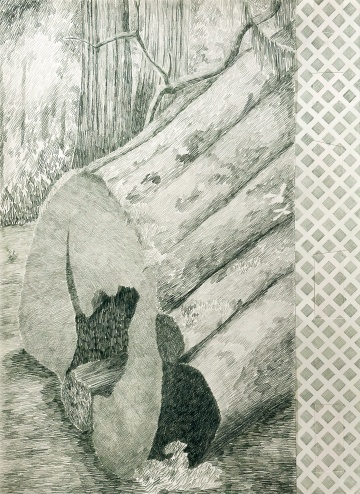Sapar Contemporary Gallery + Incubator
9 N Moore Street, 1st Floor
New York, NY 10013
917 476 6428
New York, NY 10013
917 476 6428
SAPAR Contemporary works with international artists who span three generations and five continents. They engage in global conversations and develop vocabularies that resonate as strongly in Baku, Almaty and Istanbul as they do in New York, Berlin, Paris and Mexico City. Their artistic practices vary from meditative traditional ink painting to writing programming code; what connects them are the artists’ capacity for empathy, insight, and imagination, their whimsy and generosity of spirit, as well as the rigor and depth of their studio practice. The gallery program offers a unique lens that is immediate and global, future-oriented and accessible, multi-sensory and immersive. We bring together visual artists and creative minds of other disciplines: scientists, engineers, architects, performers, musicians and perfumers. SAPAR Contemporary also commissions works that are site-specific but infused with sensibilities, materialities and traditions of the artists’ backgrounds.
SAPAR Contemporary has also launched a Neo-Nomad Incubator focused on the emerging art scene and cultural traditions of Central Asia. The Incubator program is headquartered in Almaty, Kazakhstan. The first edition of the Neo Nomad Incubator evolved around the notion of traditional and digital nomadism and aesthetics connected to nomadic experiences. The project explored the relationship between traditional nomadic cultures of Central Asia and Middle East, and realities of migration, globalization and hyper mobility. Current incubator efforts are going towards unique art trends emerging in Central Asia, South East Russia and Mongolia. SAPAR Contemporary artists’ works have been featured in international Biennials and are included in private and public collections around the world; among them are the MoMA, LACMA, Art Institute of Chicago, Guggenheim, M+, and many others.
Artists Represented:
Faig Ahmed
Gabriela Albergaria
Morehshin Allahyari
Ahmad Zakii Anwar
Phoebe Boswell
Eric Bourret
Uuriintuya Dagvasambuu
Saule Dyussenbina
Iwan Effendi
Ming Fay
Poonam Jain
Dilyara Kaipova
Kristof Kintera
Alejandro Magallanes
Geoffrey Mann
Bruno Miguel
Mulyana
Jorge Otero-Pailos
Zsofia Schweger
Tsang Kin-Wah
Wyn-Lyn Tan
Shinji Turner-Yamamoto
Mehmet Ali
Uthman Wahaab
Waone Interesni Kazki
Heeseop Yoon
Marela Zacarias
Anya Zholud
Works Available By:
Faig Ahmed
Gabriela Albergaria
Ahmad Zakii Anwar
Phoebe Boswell
Eric Bourret
Uuriintuya Dagvasambuu
Saule Dyussenbina
Iwan Effendi
Dilyara Kaipova
Kristof Kintera
Alejandro Magallanes
Geoffrey Mann
Bruno Miguel
Mulyana
Jorge Otero-Pailos
Zsofia Schweger
Wyn-Lyn Tan
Shinji Turner-Yamamoto
Uthman Wahaab
Waone Interesni Kazki
Heeseop Yoon
Marela Zacarias
Anya Zholud
Gabriela Albergaria (Portugal/Belgium)
Season to Rest or REPARAR, RÈPARER, REPAIR
February 20, 2025 - March 27, 2025
Gabriela Albergaria explores relationships between nature and humans, often focusing on care, healing, and our manipulation of the environment. She draws us into less noticed phases of lifecycles, like decomposition, or expansive geologic time that vastly exceeds human-centered experience. Through the reverent attention of her eye and hand, she magnifies the importance of pausing, rest, and restoration amid these seemingly fallow or inert periods. The meditative nature in her work generates a fuller appreciation of how phases of life and death travel in a reliant circle.
This exhibition features distinct bodies of work that unfold like the chapters of a book: observational drawings of nurse logs and glacier-moved boulders; wall-based installations and related works on paper featuring twigs she has collected from forests and parks; and a monumental cloth cascading into the gallery that Albergaria has sewn together from used washing sheets. Nurse logs are trunks and stumps of fallen trees that have died and are now the rich habitat for many organisms: mushrooms, microbes, insects and animals, and often new trees. From a human perspective, nurse logs are often unsightly or undesirable in comparison to a living tree. Yet for the rich ecosystem of a forest, the nurse log is the healer and facilitator of new life In a world in which we can so easily, with a click of a button, buy something freshly new and only single-use, Albergaria calls for this season of rest to bring about repair and quiet, aesthetic devotion to the afterlives of items.

 Back to all Member Galleries
Back to all Member Galleries

